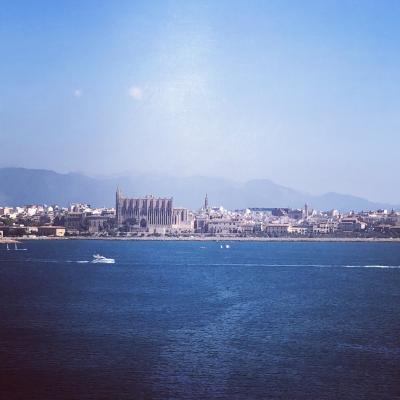What influence did Mallorca's geography have on the island's architectural styles?
Similar Topics
mallorca architecture
mediterranean climate influence
local limestone walls
coastal whitewashed houses
serra de tramuntana
rural mountain villages
gothic and moorish
architectural adaptation
Mallorca’s geography has played a crucial role in shaping the island’s distinctive architectural styles. The island’s Mediterranean climate, characterized by hot, dry summers and mild, wet winters, influenced the design of buildings to optimize comfort and functionality. Traditional Mallorcan homes often feature thick stone walls made from local limestone, which help to keep interiors cool during the intense summer heat while retaining warmth in the cooler months. The use of natural materials readily available in the surrounding landscape not only made construction practical but also helped homes blend harmoniously with their environment.
The island’s varied terrain—with coastal plains, rolling hills, and rugged mountainous regions—has also contributed to the development of diverse architectural forms. Coastal areas tend to have whitewashed houses with flat roofs, designed to reflect sunlight and collect rainwater, a vital resource on the island. In contrast, buildings in the Serra de Tramuntana mountains often incorporate steeper roofs and smaller windows to protect against stronger winds and retain heat during cooler weather. Additionally, the isolation of rural mountain villages encouraged an architecture that was both robust and self-sufficient, with large finca estates designed to support agricultural activities and withstand the elements.
Mallorca’s strategic location in the Mediterranean has further introduced layers of cultural influences into its architecture, such as Gothic and Moorish elements seen in older urban centers like Palma. However, the island’s geography ensured these styles were adapted to local conditions, leading to the unique fusion of form and function. For example, Gothic buildings here often include thick walls and shaded courtyards, serving both aesthetic and climatic needs. Overall, Mallorca’s geography has not only dictated practical considerations in construction but also fostered a rich architectural heritage that is both beautiful and well-suited to the island’s natural environment.
The island’s varied terrain—with coastal plains, rolling hills, and rugged mountainous regions—has also contributed to the development of diverse architectural forms. Coastal areas tend to have whitewashed houses with flat roofs, designed to reflect sunlight and collect rainwater, a vital resource on the island. In contrast, buildings in the Serra de Tramuntana mountains often incorporate steeper roofs and smaller windows to protect against stronger winds and retain heat during cooler weather. Additionally, the isolation of rural mountain villages encouraged an architecture that was both robust and self-sufficient, with large finca estates designed to support agricultural activities and withstand the elements.
Mallorca’s strategic location in the Mediterranean has further introduced layers of cultural influences into its architecture, such as Gothic and Moorish elements seen in older urban centers like Palma. However, the island’s geography ensured these styles were adapted to local conditions, leading to the unique fusion of form and function. For example, Gothic buildings here often include thick walls and shaded courtyards, serving both aesthetic and climatic needs. Overall, Mallorca’s geography has not only dictated practical considerations in construction but also fostered a rich architectural heritage that is both beautiful and well-suited to the island’s natural environment.
🧩 Related Questions
Related Question
How does the blooming season of almond trees in Mallorca affect local festivals?
Related Question
What are the best times of year to taste fresh loquats in Mallorca based on the island’s climate?
Related Question
How did unmarried women in rural Mallorca contribute to their family's income?
